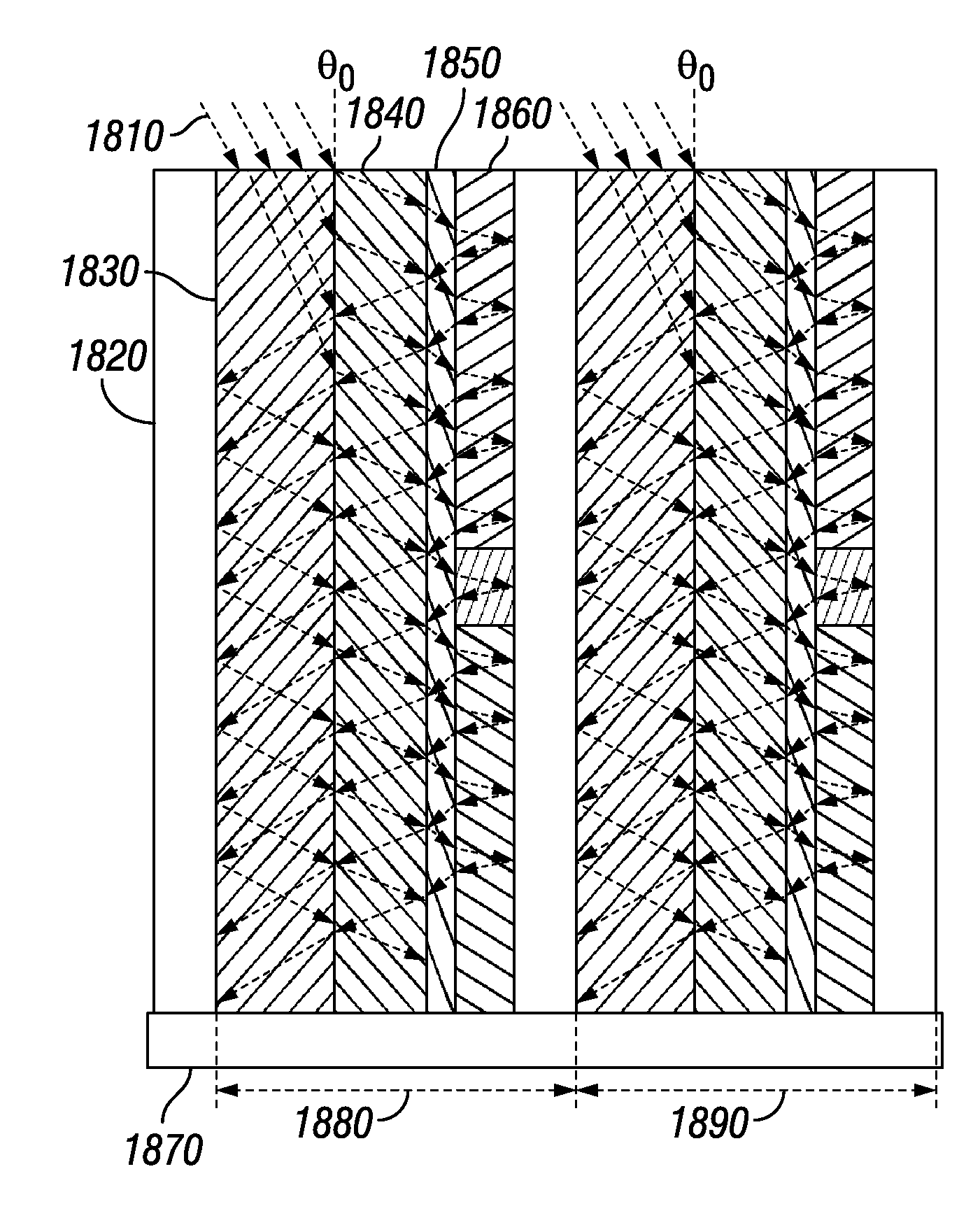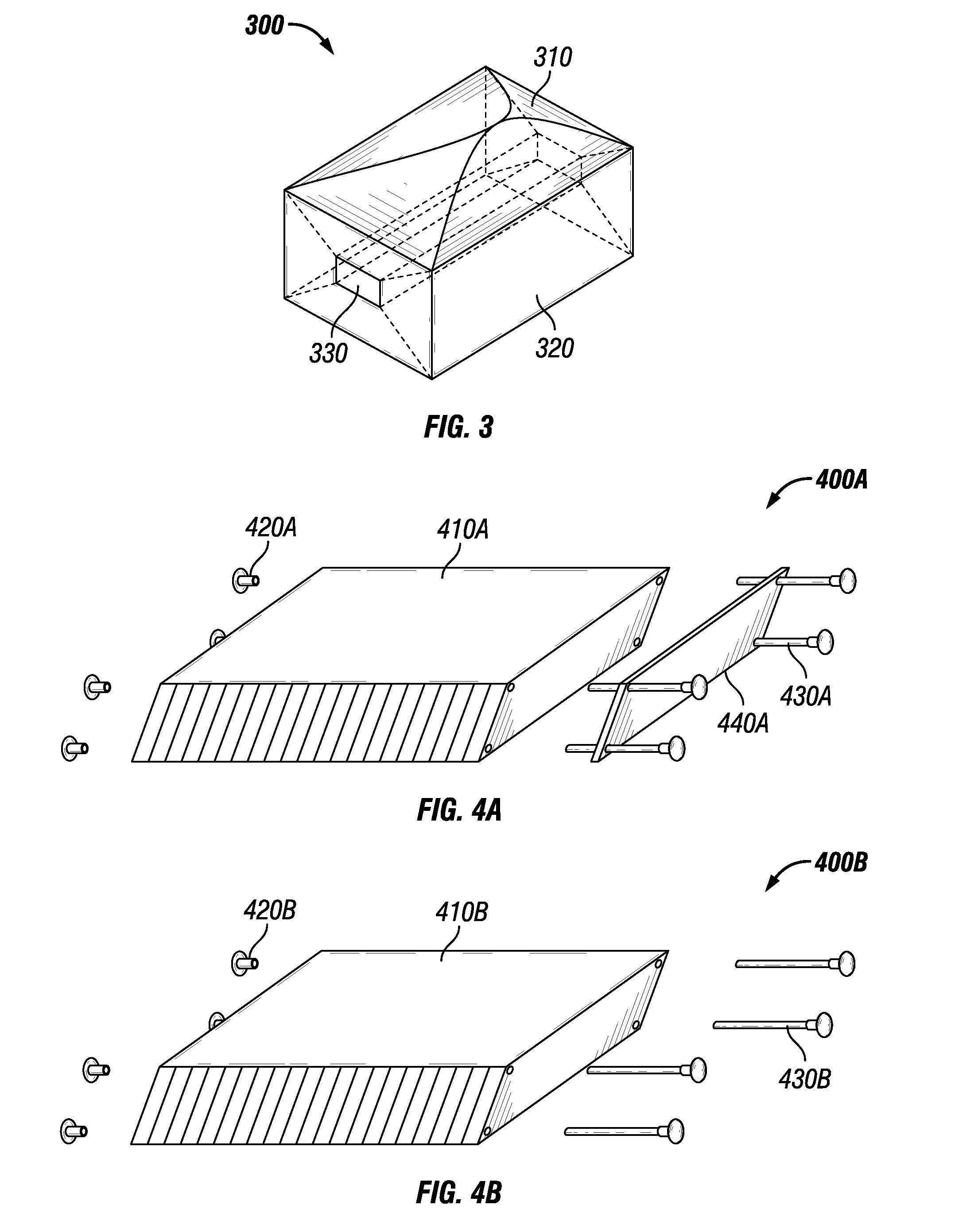Vertically stacked photovoltaic and thermal solar cell
a solar cell and vertical stack technology, applied in the field of vertical stacking photovoltaic solar cell systems, can solve the problems of not reaching the commercially feasible goal of 1$/watt peak, the cost of manufacturing these tandem cells remains, and the heat is dispersed so as to reduce the thermal energy generation effect and dissipate the heat away from the other cell components
- Summary
- Abstract
- Description
- Claims
- Application Information
AI Technical Summary
Benefits of technology
Problems solved by technology
Method used
Image
Examples
Embodiment Construction
[0044]In various embodiments, stack photovoltaic devices are described herein. The stack photovoltaic devices include a flat substrate, a first electrode layer coating the planar substrate, a continuous semiconductive (active material—AM) layer deposited above the first electrode layer, and a second electrode layer deposited above the continuous AM layer. The first electrode layer is at least partially transparent to electromagnetic radiation. The continuous AM layer is in electrical contact with the first electrode layer. The second electrode layer is in electrical contact with the continuous AM layer. The continuous AM layer absorbs electromagnetic radiation and turns the electromagnetic radiation into electrical power (voltage and current generated). The continuous AM layer includes at least one semiconducting material, but more generally two in the form of a heterojunction layer, but those continuous lines of different active materials are laid down in series. The devices (as sh...
PUM
 Login to view more
Login to view more Abstract
Description
Claims
Application Information
 Login to view more
Login to view more - R&D Engineer
- R&D Manager
- IP Professional
- Industry Leading Data Capabilities
- Powerful AI technology
- Patent DNA Extraction
Browse by: Latest US Patents, China's latest patents, Technical Efficacy Thesaurus, Application Domain, Technology Topic.
© 2024 PatSnap. All rights reserved.Legal|Privacy policy|Modern Slavery Act Transparency Statement|Sitemap



